We are putting the finishing touches on a new and Imo unique project in South America located in the foothills of the Andes in Cordoba, Argentina in a small town called La Cumbre! We were fortunate to team up with a developer that trusted us and allowed us to create something, that hopefully will serve as a futuristic model for other developments throughout South America. What we have done is taken a lot of ideas and philosophies that have been discussed thoroughly on this site and they now are becoming realities and were excited to see how the market is going to accept these concepts. Our primary focus has been on economic sustainability although environmental sustainability was also strongly considered and incorporated throughout the project. Creating economic successful golf developments is a challenge in any part of the world but this is especially true with South America because of the small mass of golfers and the fact that golf is only one of many social past times that is basically played on weekends only. So, if more is not done with less, your in for a long haul and uphill battle. So together with the developer we laid out what I consider a basic business plan foundation for our current times and our current reality in Argentina with the following criteria.
• Out of 150 or so Ha, we set aside 30ha for nine holes of quality golf. We recommended a five star hotel boutique hotel be built on a cliff some forty meters high overlooking the golf course with long panoramic vast views from all areas of the site and the surrounding foothills
• They will have apartments and fractional ownership is also available to be managed and maintained by a future hotel group.
• They will have lots and houses on the outter limits of the golf course and most will be above the golf and out of view to not take away from the golfing experience.
+ These are common factors in many areas of the world that seem to produce sufficient demand for product and producing profitable sales results. Many times these revenue producing sales get quickly ate up by, high cost golf construction cost and high maintenance cost so we tried controlling these cost by:
• Reducing land requirements by half, by limiting the golf experience to 30 ha.
• Routing the course in a natural valley and designing around and over of a natural deep wild dry creek that snakes it way throughout the property.
• Produce a routing that will take advantage of the natural movement of the terrain to refrain from any significant earth moving. Eight and half holes had virtually no earth movement.
• Creating holes with alternative-varying pars and alternative overall lengths and angles so one never gets bored and you can create different hole by hole routings suited to your game. For example:
#1, can be played as a par five six hundred yard starting hole and or a 460 par four and there are various tees in between these two tees to pick and choose, or if play is slow, you can play one tee and one ball as a par four and another tee and another ball as a par five.
#2 is a short sharp dogleg left, 345 up to 385 yards, that will be reachable with the wind but not really advisable. You will also have the alternative of playing this as a par 3 from 165 or 185 or 235.
#3 is a par four and #4 a par three and both will be explained in detail with photos at the conclusions of this out line.
# 5 is another short to medium dogleg left 320 to 420 in yards, similar to hole number two, which is a bummer but that’s what the land dictated and I glad I accepted it that way and didn´t try to force something else by creating something artificial. A special solid, no gimmick golf hole that I will post pictures of in the near future. From the forward tee the green could be reachable for long hitters but I suspect the average score will be higher for them using that front tee then the back tee at 420 unless there smart and play a five iron off the front tee.
#6 is a short par four dog leg right 340 to 370 yards and should be a fun hole. It can also be played as a par 160 to 200 yards.
#7 is a medium to long par five that will play from 480 to 580 and is fairly straight and uphill to the first landing area and downhill to the second landing area and the hole finishes turning sharply right to the green that sets up three meters above the second landing area.
#8 is a par three from 115 to 185 yards
#9 is a both a par four and a par five, which was posted a couple of months ago and I will bump in case you didn´t read about it the last time I posted.
Can be played from a Par 33 to Par 38
• We installed a single row irrigation system with some of the landing areas designed with two rows for a total of 225 automatic irrigation heads in comparison to 1500 that we normally use on an eighteen hole course. Grassed maintained fairways will have an average with of 55 yards. Outside these maintained areas will be low maintenance native vegetation typical of the zone and gorgeous imo!
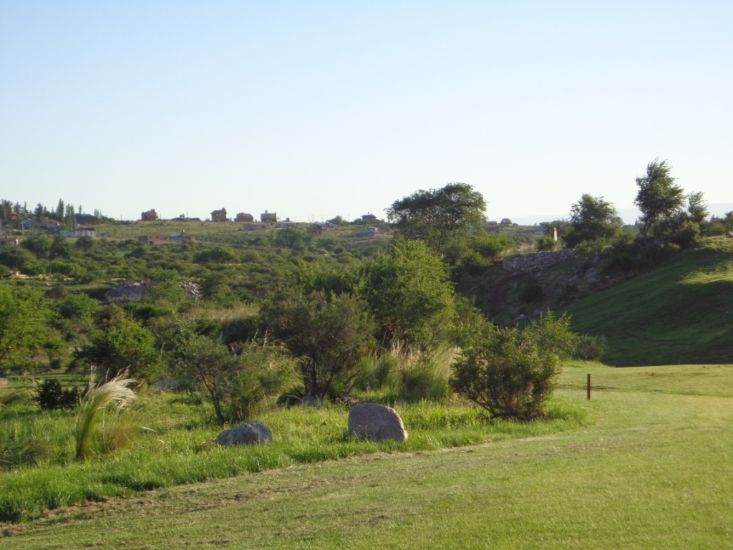
Untouched native rough seperating holes three and four
• Total water requirements will be about 200,000 to 250,000 gallons per day during summer months instead of typical one million per day. As a result pipe sizing is reduced in size and quantity and less electrical cost in relation to pumping.
• I believe Cumbre is around the same distance from the equator as southern Georgia or northern Florida. We planted dwarf Bermuda on the tees, a mixture of improved drought resistance bluegrasses and fescues on the fairways. A mixture of A1 and A4 bentgrass for the greens and about six to seven ha. of sheep fescue for around the tees that will be watered infrequently with quick couplers and tripod manual sprinklers. The idea is to keep all grassed areas and especially the fairways, firm and fast and hungry with small amounts of annual fertilizer and almost no chemicals.
(The project is 4,000 feet above sea level so the nights cool down and make it possible to provide a dense quality hitting surface with cool season grasses throughout the year. The rainy season is summer, which is nice!)
• First course in Argentina to be green year around which will be a good marketing factor.
• Native vegetation, ornamental grasses and native shrubs used and transplanted in the landscaping throughout the project. Nothing bought offsite!
• Nine holes can be played in an hour walking and eighteen in two. Average round of eighteen holes should be a little over three hours for the first couple of years until demand picks ups.
• The overall length is not real long and imo the shortness of the course co-insides with the fairly narrow corridors due to the single row irrigation system. The par five can play long however and widen out at the landing areas for this reason.
• Walking course only thereby eliminating the need for the expense of cart paths and investment cost for golf carts.
• Total construction cost in the 1.5 million dollar range.
• California greens style construction method. No peat-no coarse sand layer.
I will now present some photos from holes three and four and add other holes in the near future. You will have to use yor imagination a little and imagine the sheep fescue with twelve inches and browned out. It has a year now and is only four inches tall but we hope by next spring (Sept-Dec) we will get to those heights.
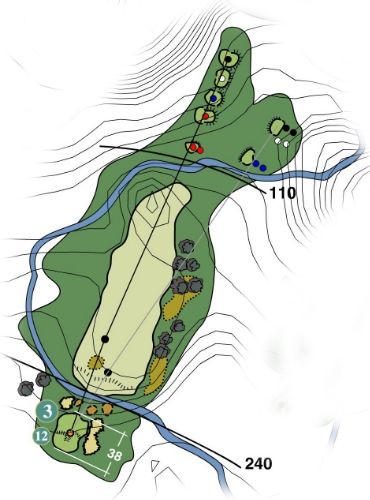
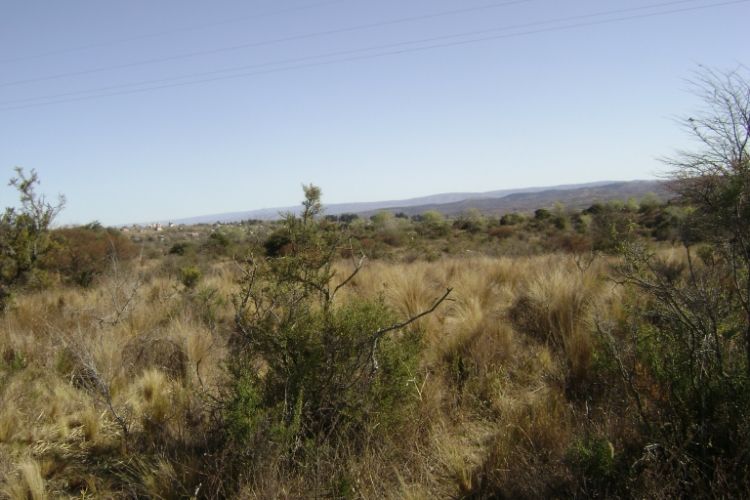
Before construction from the tee..you can see the wires if you look closely
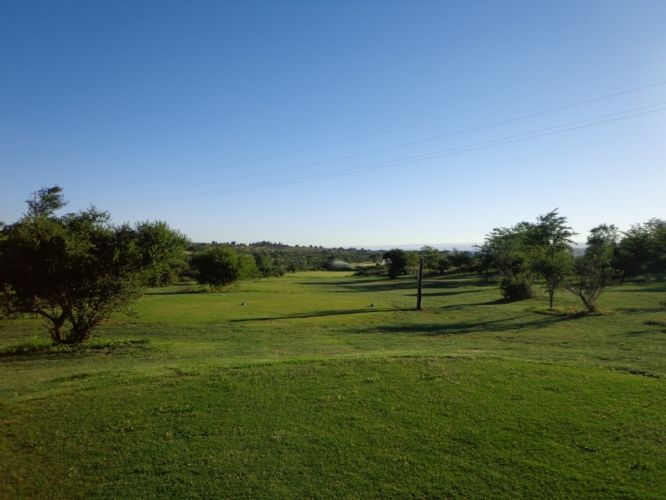
Same área as previous photo...Sheep fescues around the tees needing more time to grow
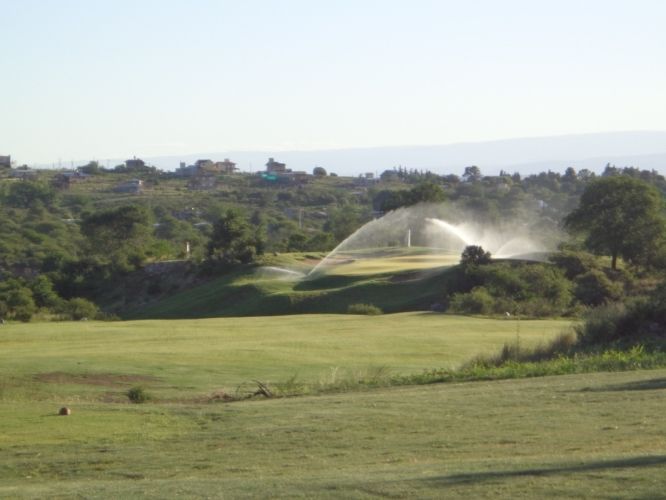
Zoomed in from behind the forward tees
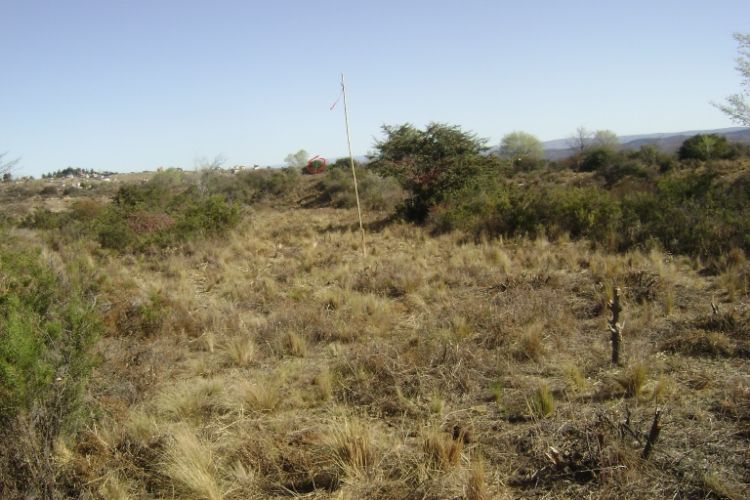
Landing área to Green site
[

From the upper landing área..about 270 from the back tee
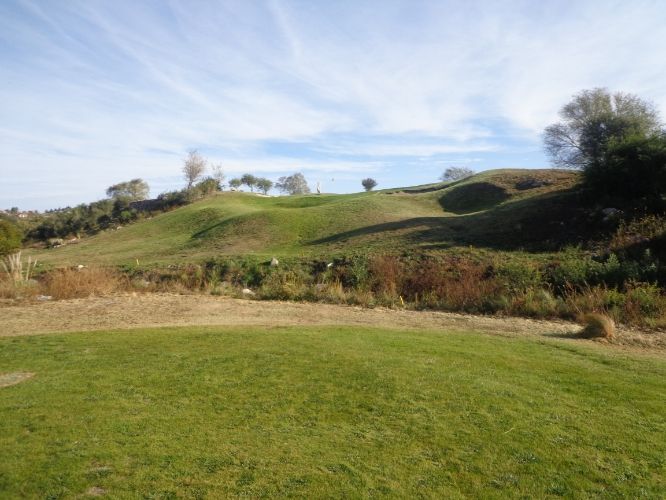
Hit it long into the lower landing and the Green becomes skyline
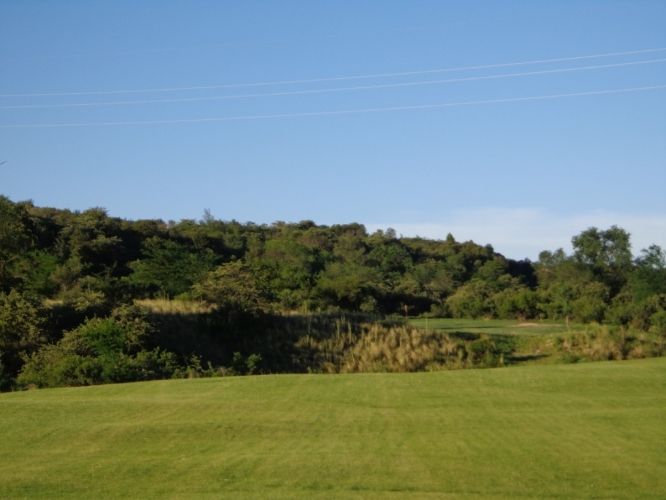
looking back at the tees on the other side of the dry creek bed that is about ten feet wide and ten feet deep
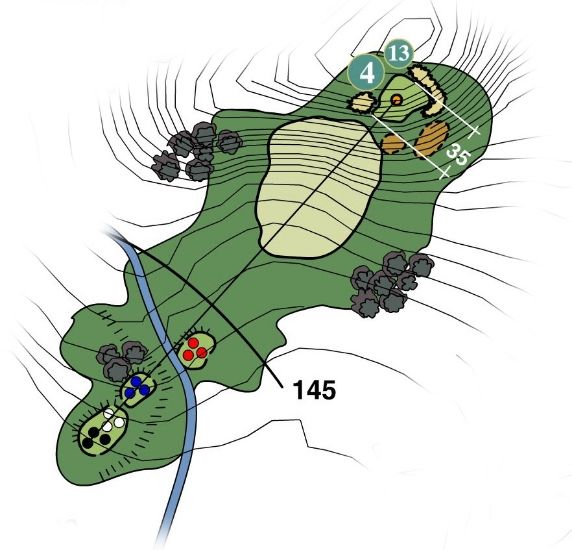
# Four, long par 3 230 into the wind, upper tees are about thirty feet above the rest of the holes
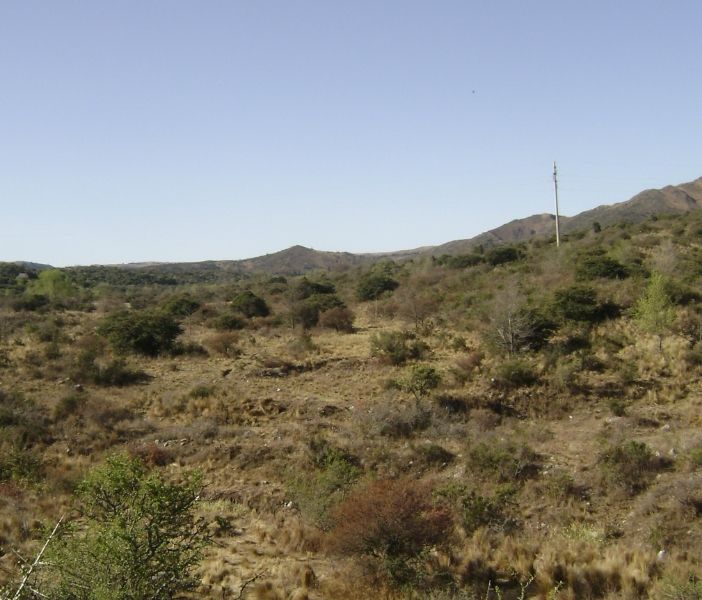
Before construction
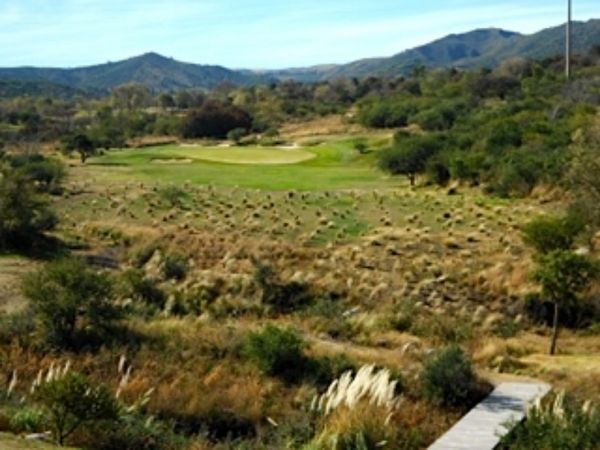
Needs more time but taking form
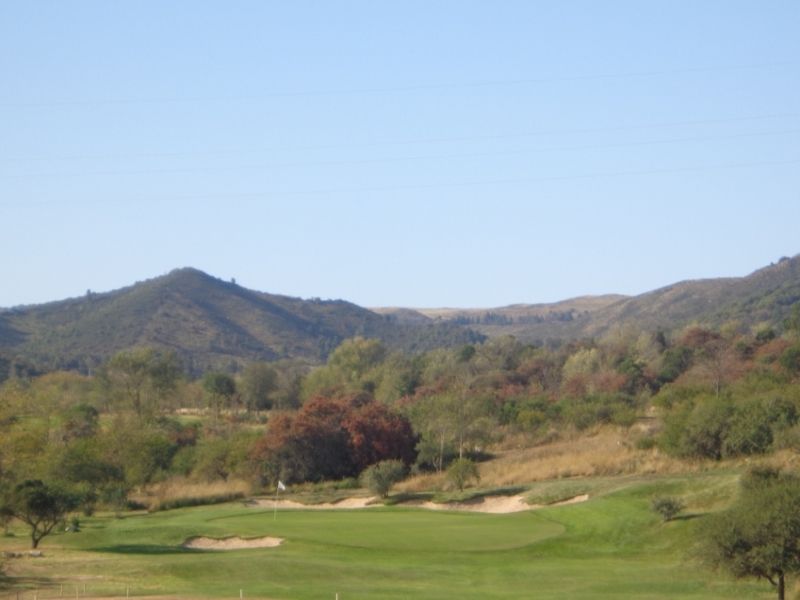
Zoomed In!
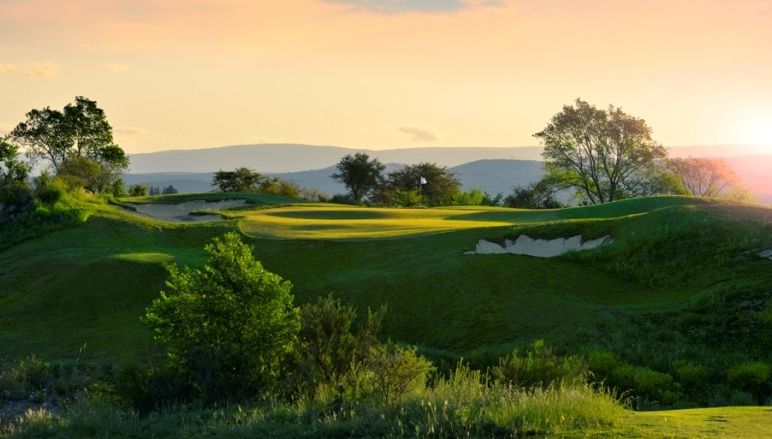
This one dedicated to my dad, Who use to say, Another Day, another dollar...fifty cents after taxes!